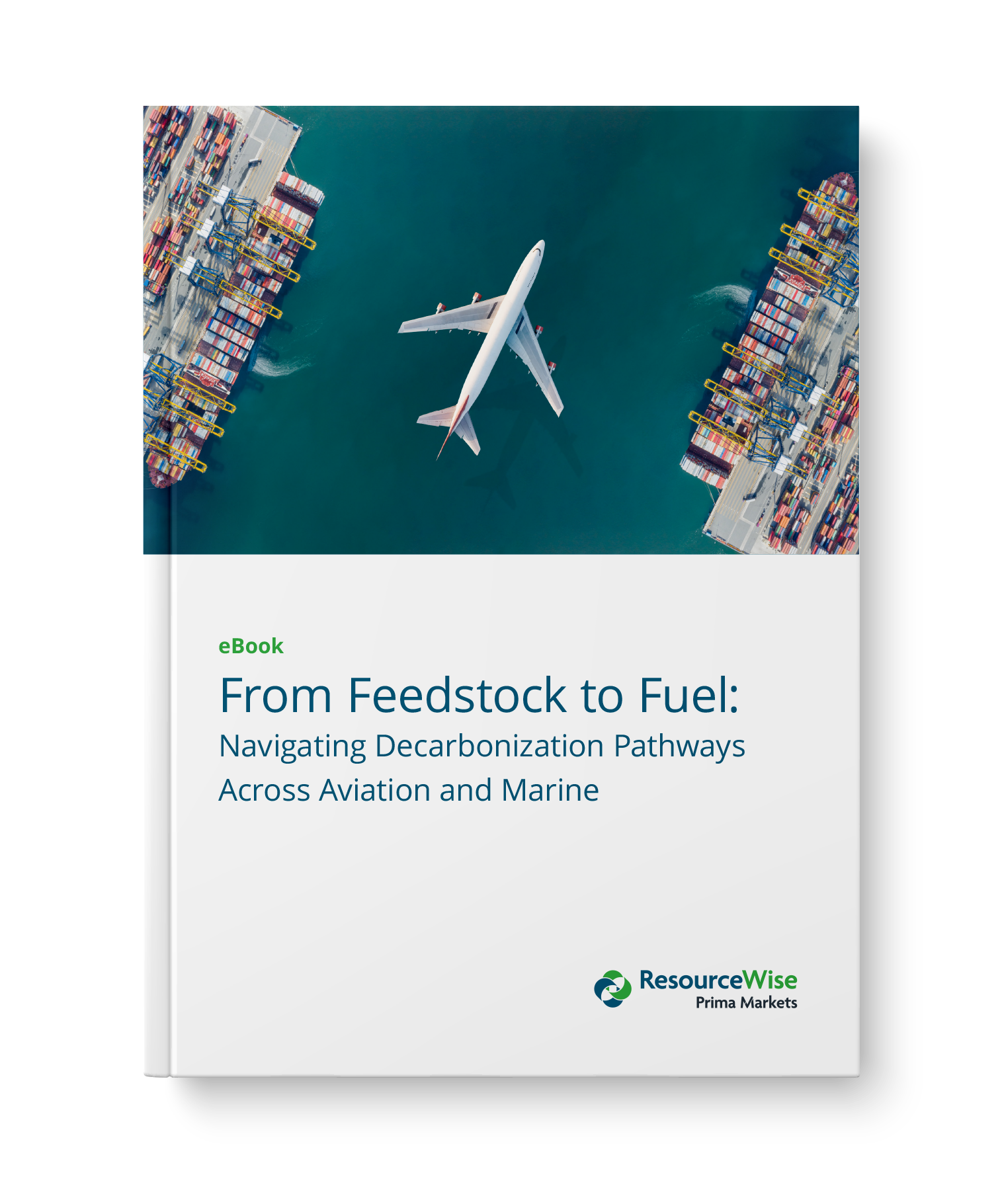
eBOOK
From Feedstock to Fuel: Navigating Decarbonization Pathways Across Aviation and Marine
Renewable feedstocks are transforming global aviation and marine fuels. This eBook breaks down the technologies, value chains, and policy forces shaping the next decade of low-carbon transport in sustainable aviation fuel (SAF) and marine bio-bunkering.
ABOUT
Mapping the Pathway from Waste to Clean Fuel
The aviation and marine industries are racing to decarbonize, but both depend on energy-dense liquid fuels. This eBook clarifies how sustainable aviation fuel (SAF) and marine biofuels are scaling, from used cooking oil and residues to captured CO₂, and what it means for global supply, policy, and investment.

CONTENTS
What's Inside
Feedstocks and Value Chains
See how waste oils, residues, and captured carbon become certified renewable fuels.
Technology Pathways for SAF
Break down SAF pathways, including HEFA, Alcohol-to-Jet, Fischer–Tropsch, Power-to-Liquid, and more.
Transitioning Marine Biofuels to Bio-Bunkering
Understand how policy, resources, and infrastructure shape global bunkering operations as they transition to renewables.
Market Outlook
Get a clear forecast on scaling challenges, feedstock competition, and where innovation will bridge the net-zero gap.
““Renewable fuel pathways are advancing rapidly, but long-term success depends on securing sustainable feedstocks, accelerating technology deployment, and staying informed through reliable market intelligence.”
—From Feedstocks to Fuel: Navigating Decarbonization Pathways Across Aviation and Marine
Download your complimentary copy today.
Stay ahead of a fast-changing fuels landscape. This eBook delivers the insight you need to plan confidently for 2026 and beyond.